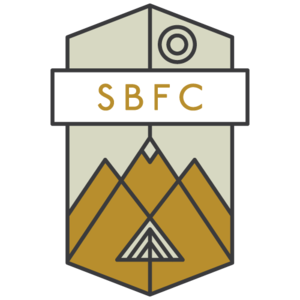Nate Thompson
Wilderness Ranger Fellow
SBFC Training Hitch- Little Loon Creek Trail
May 27-June 1, 2024
Salmon-Challis National Forest | Frank Church-River of No Return Wilderness
After two weeks of training in the frontcountry, the 2024 class of Wilderness Ranger Fellows was released into the Frank Church-River of No Return Wilderness to begin applying the skills that they had begun to develop. For this initial six day hitch of working and training, the group was split into two crews. My crew, consisting of six Fellows and three crew leaders, was flown in on bush planes to the Cougar Ranch Airstrip within the Frank Church Wilderness. Our objective was to clear an eight mile section of the Little Loon Creek Trail from the Salmon River to a historic homestead called Fur Farm. This trail hadn’t been fully cleared since the early 2000s, so we knew that there would be a significant amount of work to do. On day two of our hitch, I volunteered to join one of the leaders and another fellow on a scouting trip up to the end of the trail to gauge the level of work that the trail would require and mark any major obstacles. I knew that this would be a long hike of over seven miles each direction. I was excited to explore the area and contribute to our crew’s knowledge.
We ventured off upstream along the creek, crossing the freezing water three times early on in the day. The trail was in better condition than we expected, but there were sections of bushes along the creekside that were heavily overgrown into the trail. The scenery was gorgeous, as the creek flowed through a deep rocky valley. Around three miles into the trail, we found multiple impressive beaver dams and signs of wolf and mountain lion activity. As we progressed, we found a few small to medium-sized logs to cut and clear from the trail. After a few sections of rocky off-trail traversing and route finding, we spotted the homestead that we knew to be Fur Farm at 1:30 in the afternoon.
There are two buildings at the site, one dilapidated log cabin built by the original homesteader, Dutch Charlie, along with an impressively maintained two story cabin built from lumber. We were shocked to find the door to the intact building unlocked and sat down to enjoy our lunch at a plywood dining table. Sitting at a table for lunch is a rare treat in the backcountry, especially in a two-story building! The cabin had a small amount of unguarded supplies, including coffee, hand tools, and folding chairs. The sign on the door told us that it was managed by the Idaho Department of Fish and Game.
This homestead sits on a truly remote plot in central Idaho. It is an imposing thought that Dutch Charlie decided to begin homesteading in such a place, but the beautiful surroundings helped to explain his motivations. Typically, we think of designated Wilderness areas as undeveloped and untrammeled lands. However, the Frank Church-River of No Return Wilderness houses a multitude of structures and evidence of human activity that existed within the area for generations before its designation. In the past, the Nez Perce and Shoshone tribes inhabited the area. Tragically, these tribes were driven out by miners in the late-1800s when gold was discovered and economic incentives increased the pressure on the land. The Frank is the second largest Wilderness area in the lower 48, with over two million acres of wild land. That massive plot contains a number of airstrips, historic homesteads and ranches, mines, and even fully functional backcountry lodges. In my view, these developments do not detract from the character of the landscape, they support it. They are historic and cultural artifacts that contribute to the Frank’s uniqueness and remind us of the humans who have experienced the brutal Wilderness before us. My visit to Fur Farm emphasized the importance of our efforts to protect this Wilderness and continue the string of cultural heritage into the future.
Denver, CO
Colorado Mountain College- Sustainability Studies
Nate grew up camping and exploring the Mountain West with his family. He attended Colorado Mountain College, where he completed programs in Outdoor Education and Sustainability Studies. He feels deeply drawn to Wilderness, where he can challenge himself and find purpose. Nate loves to ski all winter and spends his summers biking and backpacking. Along with his passion for outdoor adventures, he enjoys discovering music, reading, and watching hockey.







